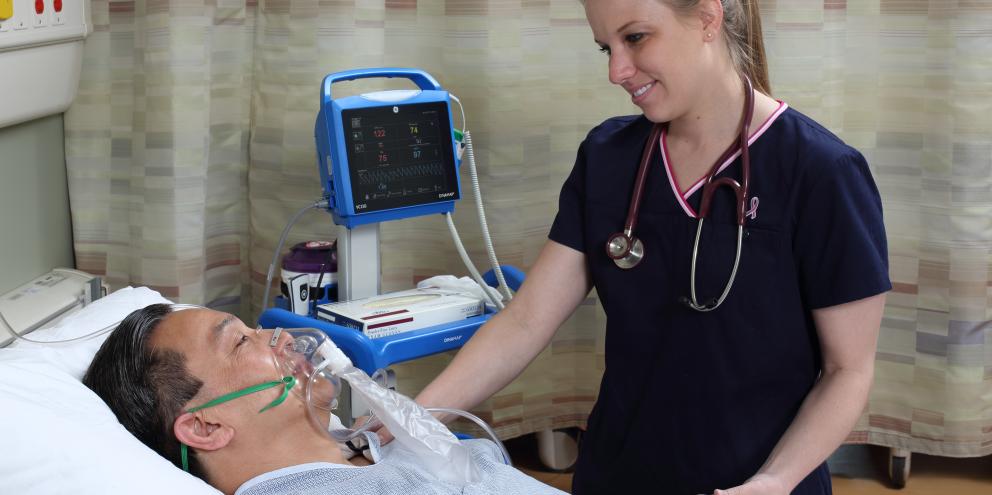1 From: Preliminary observations in systemic oxygen consumption during targeted temperature management after cardiac arrest; Amy Uber, Anne V. Grossestreuer, Catherine E. Ross, Parth V. Patel, Ambica Trehan, Michael W. Donnino, Katherine M. Berg. Published in Resuscitation, June 2018 Volume 127, Pages 89–94. © 2018 Elsevier B.V.
Aim
Limited data suggests low oxygen consumption (VO2), driven by mitochondrial injury, is associated with mortality after cardiac arrest. Due to the challenges of measurement in the critically ill, post-arrest metabolism remains poorly characterized. We
monitored VO2, carbon dioxide production (VCO2) and the respiratory quotient (RQ) in post-arrest patients and explored associations with outcome.
Methods
Using a gas exchange monitor, we measured continuous VO2 and VCO2 in post- arrest patients treated with targeted temperature management. We used area under the curve and medians over time to evaluate the association between VO2, VCO2, RQ and the VO2:lactate ratio with survival.
Results
In 17 patients, VO2 in the first 12 h after return of spontaneous circulation (ROSC) was associated with survival (median in survivors 3.35 mL/kg/min [2.98,3.88] vs. non-survivors 2.61 mL/kg/min [2.21,2.94], p = .039). This did not persist over 24 h. The VO2:lactate ratio was associated with survival (median in survivors 1.4 [IQR: 1.1,1.7] vs. non-survivors 0.8 [IQR: 0.6,1.2] p < 0.001). Median RQ was 0.66 (IQR 0.63,0.70) and 71% of RQ measurements were <0.7. Patients with initial RQ < 0.7 had 17% survival versus 64% with initial RQ > 0.7 (p = .131). VCO2 was not associated with survival.
Conclusions
There was a significant association between VO2 and mortality in the first 12 h after ROSC, but not over 24 h. Lower VO2: lactate ratio was associated with mortality. A large percentage of patients had RQs below physiologic norms. Further research is needed to explore whether these parameters could have true prognostic value or be a potential treatment target.
Full article is available on the Resuscitation journal website: https://www.resuscitationjournal.com/article/S0300-9572(18)30160-6/full…
Resuscitation is an official journal of the European Resuscitation Council.
Not all products or features are available in all markets. Full product technical specification is available upon request. Contact a GE HealthCare Representative for more information. Please visit www.gehealthcare.com.
Data subject to change.
© 2024 GE HealthCare
GE is a trademark of General Electric Company used under trademark license.
All other trademarks are property of their respective owners. Reproduction in any form is forbidden without prior written permission from GE HealthCare. Nothing in this material should be used to diagnose or treat any disease or condition. Readers must consult a healthcare professional.
JB57579XX_JB28876XX 02/2024







